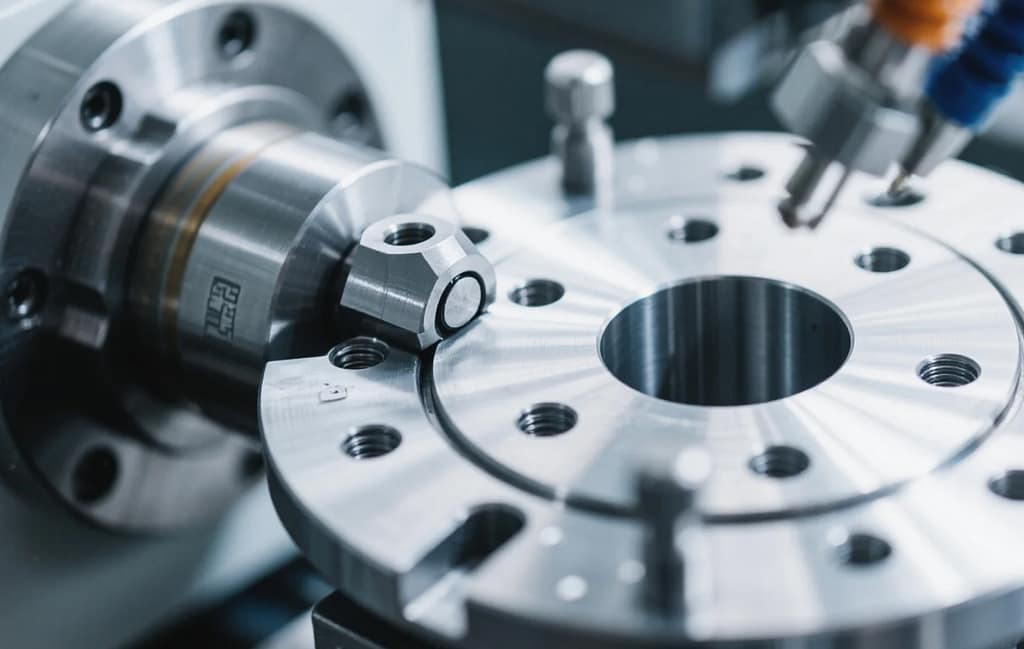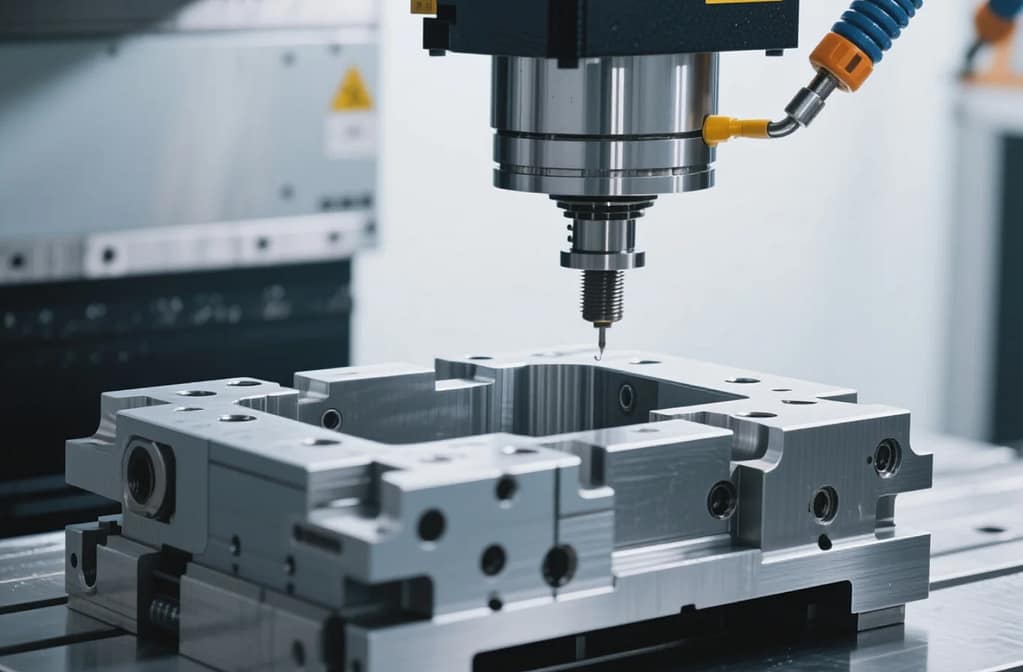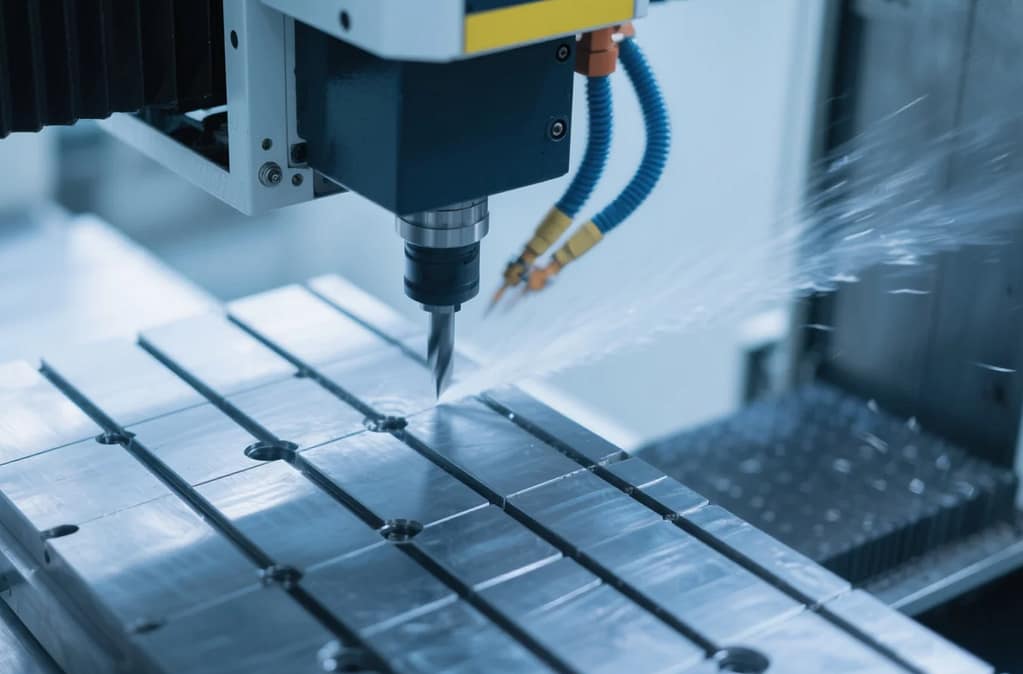In today’s highly demanding industrial landscape, the margin for error in component manufacturing is virtually non-existent. Industries from aerospace to medical devices rely on parts that adhere to micron-level tolerances, requiring a manufacturing methodology that guarantees both extreme accuracy and consistent repeatability. Consequently, a fundamental question emerges for product developers and procurement managers: Is CNC 가공 the indispensable cornerstone of modern precision manufacturing? This article will delve deeply into the world of Computer Numerical Control (CNC 가공), illuminating its core principles, revolutionary features, and profound impact, particularly for those whose success depends on securing the highest quality precision parts.
Understanding the Revolution of CNC 가공

CNC 가공 is not merely an evolution of traditional milling and turning; it is a fundamental paradigm shift in how material is precisely sculpted to specification. At its core, the process involves using pre-programmed computer software, specifically CAD (Computer-Aided Design) and CAM (Computer-Aided Manufacturing) files, to dictate the movement of factory tools and machinery. This automated, closed-loop system replaces the manual control of traditional methods, thereby eliminating human variability and allowing for the tightest possible tolerances.
Initially, a digital 3D model of the desired part is created, which is then translated by CAM software into specific G-code and M-code instructions. These digital commands guide multi-axis machines—including mills, lathes, and grinders—to sequentially remove material from a raw block or workpiece, known as a billet. Ultimately, this precision-guided material subtraction yields a finished component that perfectly matches the digital blueprint, regardless of complexity. This seamless digital-to-physical workflow is what makes CNC 가공 a technological marvel and a prerequisite for high-stakes manufacturing.
Why Precision Manufacturing Demands CNC 가공

For service users in the precision sector, the choice of manufacturing technique is not a matter of preference but of necessity. CNC 가공 offers distinct, quantifiable advantages that are directly tied to product performance and market competitiveness.
The Standard of Unmatched Accuracy and Tight Tolerances
The primary appeal of CNC 가공 in precision sectors is its ability to achieve consistently tight tolerances, often down to $\pm0.0001$ inches or even finer. This level of dimensional accuracy is fundamentally impossible to replicate through manual or conventional machining. Since the cutting tool’s path is governed by rigorous computer code, virtually all elements of human error are bypassed. Furthermore, sophisticated machines often feature advanced thermal compensation systems and on-machine probing, ensuring that dimensional integrity is maintained throughout long production runs. As a result, critical parts for highly sensitive assemblies—such as optical mounts, medical implants, or aerospace components—can be reliably produced with the assurance that they will fit and function perfectly the first time.
Exceptional Repeatability and Consistency
Consistency across an entire production batch is vital, especially when high volumes are involved. Once the CNC program is validated and executed, every subsequent part is produced to the exact same specifications. This is a crucial benefit: if a batch of 1,000 components is ordered, all 1,000 components will be virtually identical. This high degree of repeatability eliminates the need for extensive post-production sorting or adjustment, dramatically simplifying assembly processes for the end-user. Therefore, for ongoing production or when interchangeability of parts is paramount, the machine’s relentless consistency provides tangible value.
Facilitating Intricate and Complex Geometries
Modern product design frequently pushes the boundaries of manufacturing capability. Complex geometries—featuring internal threads, non-linear contours, or multi-faceted surfaces—often prove challenging for traditional methods. Significantly, multi-axis CNC 가공 (including 4-axis and 5-axis systems) allows the cutting tool or the workpiece to move simultaneously along several axes. This capability enables the creation of highly intricate parts in a single setup, minimizing the need for multiple manual alignments and fixture changes. Consequently, designs that were previously deemed manufacturable only through expensive, specialized tooling can now be realized efficiently, providing design engineers with unprecedented freedom.
Applications and Versatility in Critical Industries
The versatility of CNC 가공 extends far beyond simple metals, accommodating a vast spectrum of materials, including robust alloys, engineering plastics, and composites. This adaptability makes it the go-to solution across several critical industries.
Aerospace and Defense
In the aerospace sector, components are subject to extreme stresses, temperatures, and regulatory scrutiny. CNC 가공 is relied upon to fabricate turbine blades, structural airframe parts, and complex manifold housings from high-performance materials like titanium and specialized aluminum alloys. Here, the precision ensures flight safety, while the ability to machine exotic metals guarantees material performance under demanding conditions.
Medical and Healthcare Devices
The medical industry requires extreme purity and tight tolerances for devices that are often life-critical. Surgical instruments, orthopedic implants, and diagnostic equipment components are routinely produced using CNC 가공. The process allows for the creation of very small, precise features and smooth surface finishes that are essential for biocompatibility and functional reliability.
Electronics and Semiconductor Manufacturing
The electronics sector drives the global demand for miniature, high-tolerance components. From custom heat sinks and complex enclosure chassis to intricate connectors and fixtures used in the semiconductor fabrication process, CNC 가공 delivers the consistent quality needed to house and protect sensitive electronic sub-assemblies.
The Operational Advantage and Forward-Looking Value

Beyond the technical precision, the adoption of CNC 가공 also delivers measurable operational and economic benefits to the user.
Improved Efficiency and Cost-Effectiveness
While the initial machine investment is substantial, the long-term operational costs are remarkably favorable. Once programmed, a CNC machine operates with minimal human intervention, often running 24/7. This high degree of automation significantly reduces labor costs per part. Furthermore, because of the high accuracy and consistent execution, material scrap rates are dramatically lowered compared to manual methods. Therefore, choosing a CNC 가공 service translates into optimized production cycles, reduced waste, and a more cost-effective manufacturing strategy for the end-user.
Strategic Scalability and Rapid Prototyping
For businesses ranging from start-ups in rapid iteration to large-scale manufacturers, flexibility is key. CNC 가공 excels at scalability. The same digital program used to produce a single, high-fidelity prototype can be used immediately and without modification to launch high-volume production. This feature accelerates the time-to-market for new products, providing a crucial competitive edge. Moreover, modifications to a design are simply a matter of editing the digital code, facilitating quicker turnaround times for design revisions.
A Vision for Responsible Manufacturing
At Captec Precision, the commitment to CNC 가공 is rooted in a fundamental belief in responsible manufacturing. Utilizing advanced, automated systems not only enhances part quality but also promotes a safer working environment and reduces material waste, aligning with a future-focused, sustainable industrial practice. Our investment in state-of-the-art equipment and a professional technical team underscores our dedication to providing partners with comprehensive, customized, and high-quality solutions, moving seamlessly from design consultation to efficient, delivered components. It is a shared value that high quality should never come at the expense of ethical production standards.
In conclusion, for those requiring parts with absolute certainty in dimension and performance, the answer to our initial question is clear. CNC 가공 is not just the cornerstone of modern precision manufacturing; it is the foundation upon which the future of reliable, complex, and highly accurate component production is built.
Frequently Asked Questions
Q1: What is the tightest tolerance that can be achieved with precision CNC 가공?
A: While tolerances vary based on the machine, material, and specific process (e.g., milling vs. grinding), many modern, high-end CNC centers can consistently achieve tolerances as tight as $\pm0.0001$ inches ($2.54 \text{ microns}$) or even finer, which is crucial for demanding industries like optics and medical devices.
Q2: How does CNC 가공 improve cost-effectiveness for high-volume orders?
A: For high-volume orders, CNC’s automation significantly reduces labor costs and run-time, minimizing cost per part. Crucially, its high accuracy drastically reduces material waste (scrap rate) and the need for reworks, leading to considerable savings in material and production hours.
Q3: What materials are best suited for precision CNC 가공?
A: CNC 가공 is highly versatile. It can process almost any material, including aerospace-grade metals (Titanium, Inconel), stainless steels, aluminum alloys, engineering plastics (PEEK, Delrin), and various composites, allowing engineers maximum flexibility in material selection.